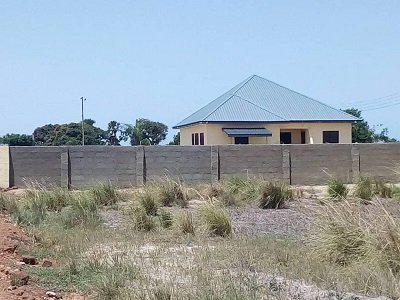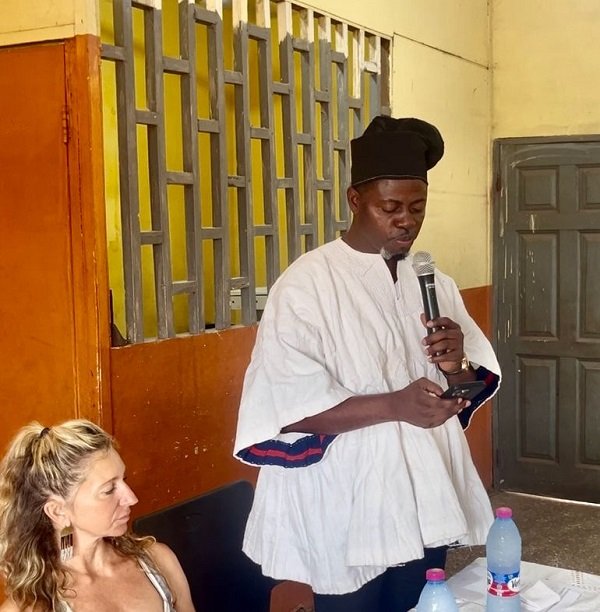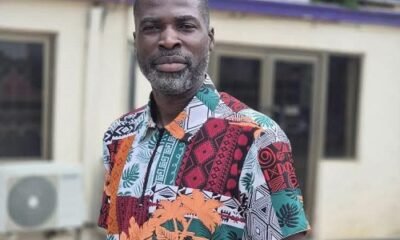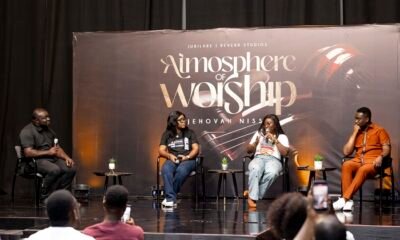News
Ada women kick against commissioning of mortuary near salt lagoon

The Association of Women in Salt Mining in Ada-Songor is kicking against the commissioning of a mortuary near the salt lagoon in the community saying the gesture will jeopardise the market for Ada Salt.
The salt miners are, therefore, suggesting that, the facility be converted into a cold store.
The women in the communities kicked against the location of the facility because according to them it is a drainage into the Salt Lagoon and also a cemetery for the Anyamam community.
President of the association, Madam Mary Akuteye blamed traditional leaders and government representatives for turning a deaf ear to the plight of the people.
According to her, it is forbidden to cross the lagoon with a dead body.
She said, “If it happens inadvertently, it demands ritual purification to appease the gods before the lagoon will crystalise salt again. We hold the view that, waste water from the mortuary will seep into the lagoon.”
“We believe that, the location of the mortuary is a danger to the salt market: locally, nationally and internationally.”
Speaking to Mr Woliatse Raymond Abayateye, the chief fisherman of the community who gave the land for the construction of the mortuary, he explained that, several years ago authorities of the Battor Catholic Hospital, consulted the chiefs and people of the coastal communities for a piece of land to establish a hospital but they declined the offer.
“Posterity will judge me if history is repeated. Battor Catholic Hospital management needed a land to construct a mortuary for communities along the Sege coastal communities so I offered them land,” he added.
The demand for a mortuary is due to the increasing number of corpses from the coastal communities.
The Ada District Chief Executive (DCE), Mr Adjoteye Lawerh Akrofi said, “The Environmental Protection Agency (EPA) in the district and regional team has certified and given clearance for the project.”
Their shouts will rather publicise the salt wrongly in the market,” he added.
Meanwhile, , Monica Kuadzo-Gbor, a management member of the Battor Catholic Hospital said, prevention was their priority as a health institution, therefore, measures have been put in place to ensure social, economic and environmental safety.
The salt lagoon was the source of life for many people in the Ada state.
From Lucy Laryea ,Ada
News
Support Street Academy to Break Cycle of Poverty in Society — Odododiodioo MP

Mr. Alfred Nii Kotey Ashie, the Member of Parliament for the Odododiodioo Constituency in the Greater Accra Region, has assured the Accra Street Academy of his support in achieving its mission of uplifting vulnerable children within the community to break the cycle of poverty. “Without the needed support, your efforts may go round in circles due to the enormity of the task. This should not be left on the shoulders of the Academy alone. You need support from both government and the private sector. With that, the Academy would be in a good position to shape the future of these children on the streets,” he said.
The Accra Street Academy, originally formed in 1985 as a boxing arena, now serves as a school for deprived children, with most of its population numbering hundreds of pupils being neglected children from the streets of Jamestown and its environs. Mr. Alfred Nii Kotey Ashie made these remarks at the annual stakeholders’ meeting and fundraising event held over the weekend under the theme “Empowering Street Children: Health and Wellness.” The event is one of the Academy’s annual programmes, organized to raise funds and other forms of support to aid the school in catering to the needs of the children and holding its Christmas get-together.
According to the MP, it is worth noting that these children are taught and provided with two meals and a snack daily through the support of benevolent members of society. In view of this, he promised to facilitate the acquisition of documents needed for the construction of an Astroturf within the school’s premises. He noted that “every child has the right to play, and therefore I pledged to do my best to secure the needed documents” for the project to commence.
The legislator disclosed that over the years, the academic programmes of the Accra Street Academy have transformed children surviving on the streets into successful adults. He therefore urged other members of society to partner with the school to “help pupils rise higher for a better Ghana.” In the 2025/26 academic year, 22 pupils were absorbed by the Accra Metro Education Directorate as they transitioned into various Junior High Schools, while still returning to the Accra Street Academy for academic support.
Ms. Yvonne Abba-Opoku, a chartered governance advisor and senior executive in the nonprofit and charity sector, stated that the best gift to give a child was education.
By Spectator Reporter
Join our WhatsApp Channel now!
https://whatsapp.com/channel/0029VbBElzjInlqHhl1aTU27
News
Attend antenatal clinics for safe delivery … expectant mothers urged

Mrs Regina Kudom, Senior Midwifery Officer at the New Atuabo Health Centre in the Tarkwa Nsuaem Municipality, has urged expectant mothers to attend antenatal clinic regularly for safe delivery.
She revealed that “in Tarkwa and its environs many pregnant women prefer staying at prayer camps, we are not against that, you can be there, but when your time is up for your antenatal session make sure you attend.”
Mrs Kudom gave the advice when the Gold Fields Ghana Foundation (GFGF) observed the World Prematurity Day with pregnant women at New Atuabo, Huniso and Awudua health centres.
World Prematurity Day falls on November 17, every year, and it is celebrated to raise awareness about the challenges faced by pre-term babies and their families.
She said research suggested that sex during pregnancy could soften the cervix and potentially aid in labour preparation.
“That is the reason why we encourage pregnant women to have sex with their partners, if they do not have any health implications,” she added.
Mrs Kudom appealed to the GFGF to upgrade the New Atuabo health centre as the current structure was too small because they received many patients daily.
Madam Ayishetu Mohammed, Project Coordinator for GFGF, explained that they received donations from Project C. U. R. E and the items were given to health facilities in their operational area.
She stated that they noticed there were baby dresses, sanitary pads, and baby apparel, so they decided to distribute them among expectant mothers in three of their host communities.
Madam Mohammed said because the foundation was interested in preventive care, they brought a midwife from the Tarkwa Mine hospital to educate the pregnant women.
She extolled the midwives in New Atuabo health centre for the education they gave to the pregnant women and implored them to heed to the advice given during antenatal visits to reduce maternal deaths in the Tarkwa Nsuaem and Prestea Huni-Valley Municipalities.
Mr Paa Kwasi Egan, Deputy Chief Physician Assistance, emphasised that a pregnant woman being anemic meant she was not eating a balance diet, and added that, “Some of these women do not have money to buy food or visit antenatal clinics.”
He said when men follow their wives for antenatal visits, they would be educated extensively on why they should provide funds for their pregnant wives.
Mr Egan, therefore, encouraged all men to be involved in their pregnant wives’ antenatal care appointments so they could learn more about pregnancy, childbirth, and parenting. – GNA







